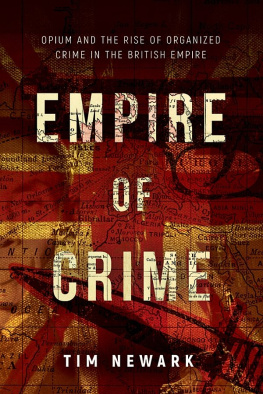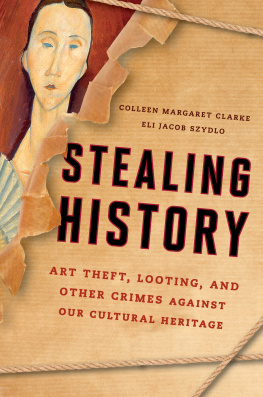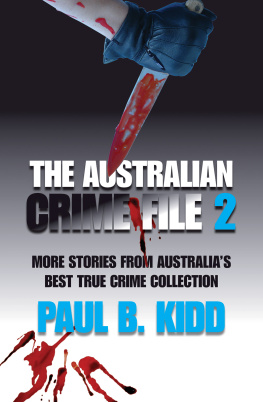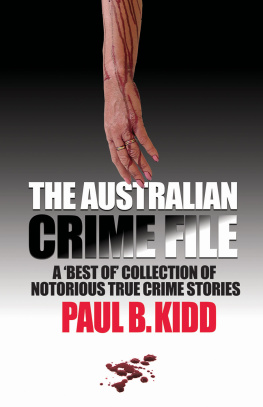Copyright 2020 by Verlag Kiepenheuer & Witsch, Colgne/Germany
English translation 2021 by Paul David Young
Originally published in German as Kunst und Verbrechen (Galiani Berlin, 2020).
The translation of this work was supported by a grant from the Goethe-Institut.
See page 267 for image credit information.
All rights reserved.
No part of this book may be reproduced, stored in a retrieval system, or transmitted in any form or by any means, including mechanical, electronic, photocopying, recording, or otherwise, without the prior written permission of the publisher
SEVEN STORIES PRESS
140 Watts Street
New York, NY 10013
www.sevenstories.com
College professors and high school and middle school teachers may order free examination copies of Seven Stories Press titles. Visit .
Library of Congress Cataloging-in-Publication Data
Names: Koldehoff, Stefan, author. | Timm, Tobias, 1975- author. | Young, Paul David, translator. | Koldehoff, Stefan. Kunst und Verbrechen. Title: Art & crime / by Stefan Koldehoff and Tobias Timm ; translated by Paul David Young. Other titles: Kunst und Verbrechen. English Description: New York, NY : Seven Stories Press, [2021] | Includes bibliographical references and index. Identifiers: LCCN 2021030498| ISBN 9781644211199 (hardcover) | ISBN 9781644211205 (ebook) Subjects: LCSH: Art--Forgeries. | Art thefts. | Cultural property--Destruction and pillage. Classification: LCC N8790 .K65132021| DDC 702.8/74--dc23 LC record available at https://lccn.loc.gov/2021030498
TEXT DESIGN: Beth Kessler
Printed in the USA.
9 8 7 6 5 4 3 2 1
CONTENTS
1
STOLEN, ROBBED, KIDNAPPED
2
THE DISAPPEARANCE OF THE ORIGINAL
3
CULTURAL HISTORY DESTROYED
4
WHEN DICTATORS COLLECT
5
THE FAKES PRESIDENT
6
ART INVESTMENT AS FRAUD
7
DIRTY MONEY AND CLEAN ART
LIGHT AND SHADOW
AN INTRODUCTION
The international art marketbetween New York and Beijing, London and Moscow, Berlin and Monacohas two sides, one full of light and the other dark. Both are the products of a development over the past two decades in galleries, auction houses, and the internet, in which the prices for painting and sculpture have exploded: $250 million for Paul Czannes Card Players from a private collection in Geneva, $300 million for Paul Gauguins Tahitian painting Nafea faa ipoipo, $157 million in a New York auction for a Reclining Nude by Amedeo Modigliani, $141 million for Alberto Giacomettis sculpture Lhomme au doigtand, of course, the already legendary $450 million that a Muslim head of state paid in November 2017 at Christies in Rockefeller Center on Fifth Avenue for the picture of Christ Salvator Mundi, although experts still disagree whether the small wood panel was, as was claimed, to any significant extent painted by Leonardo da Vinci. In total, according to the Art Basel and UBS Global Art Market Report, more than $50 billion flows through the international art market annually.
And these are only the prices that are publicizedon the daylight side of the market. Here there are respectable auction houses that make special advisory offers to their customers on a level competitive with that of investment banksnaturally, with discretion and, if it simply has to be, through offshore firms in tax havens, as demonstrated by the plunder of the Malaysian government reserves known as the 1Malaysia Development Berhad scandal or 1MDB.
At auctions, these thieves used the hundreds of millions of dollars in stolen Malaysian government money to buy art by Vincent van Gogh and Pablo Picasso, among others. The sales rooms of the galleries that conduct business internationally look like luxury boutiques for exclusive fashion houses. And they aspire to sell the same magic: these multimillion-dollar transactions arent about art; rather, lifestyle and prestige are for sale. Those who can show off, say, a fresh Jeff Koons hanging on the wall at their next party in the Meatpacking District in New York are more than just rich. They belong not only to the minority global class of the well-to-do, whose wealth has grown enormously in the past few years, but also to what counts as the global cultural elite, into which one can buy entry through art.
Those who can afford it employ an art adviser, who, in exchange for sumptuous payment, takes over the search for suitable artworks and, as a practical matter, can identify simultaneously which artists in the current season are particularly sought after and what prices their works command. That this approach can also go wrongbecause agreements are not kept and big-name artists such as Picasso, Kirchner, and Lichtenstein also painted some bad picturesbecame spectacularly clear in the case of the art adviser Helge Achenbach. The entry of investment bankers, stock speculators, and brokers vulgarized the art market completely, he said in an interview. In the stock market, everything is monitored. If you buy stock with insider information, you can expect the authorities to knock on your door right away and arrest you. The art market is easier to manipulate. Achenbach knows what hes talking about: before he was sentenced to six years imprisonment in 2015 because of millions of dollars in art swindling, he had worked as an art adviser for banks and attempted to establish an art-based investment fund.
THE DARK SIDE OF THE MARKET
There is the other side, the dark side of the lucrative commerce in art. A business that can make as much money as the art market does automatically attracts those who want to play without following the rules.
In a villa in the Rhineland, an entire collection of supposedly authentic Russian avant-garde art is offered for sale, complete with a printed catalogue on which the logo of an internet photo-book publisher is prominently displayed. But that didnt stop a West German entrepreneur from making expensive purchases, nor did the fact that the accompanying expert reports raised questions as to the works authenticity.
Then theres the expert in charge of the catalogue of one of the most sought-after and high-priced artists of classic European modernism, who was paid a commission of 91,000 by a German auction house for his expertise, a sum which an independent audit found could not be justified.
And theres the expert who for years produced scientific verifications of works of art, supposedly worth millions of dollars, that were sent to him rolled up like posters and mailed through regular commercial courier services. Any museum or reputable art dealer would have the pictures framed, packed in highly protective, climatized containers, and transported by special art handlers.
These are some consequences of the rapid development of the art market in the twenty-first century, about which much has been said and written. The story of this development includes the hedge-fund billionaires in Manhattan and on Long Island who make collecting art both a hobby and a profitable investment. And this story is inseparable from ever-growing prices and the way art has become the new status symbol of the super rich, with buyers and sellers in Hong Kong, India, Russia, and South America. It is a story of increasing demand and dwindling supply, because the market is limited in product.






![Reichel - Global Crime: an Encyclopedia of Cyber Theft, Weapons Sales, and Other Illegal Activities [2 Volumes]](/uploads/posts/book/262750/thumbs/reichel-global-crime-an-encyclopedia-of-cyber.jpg)







